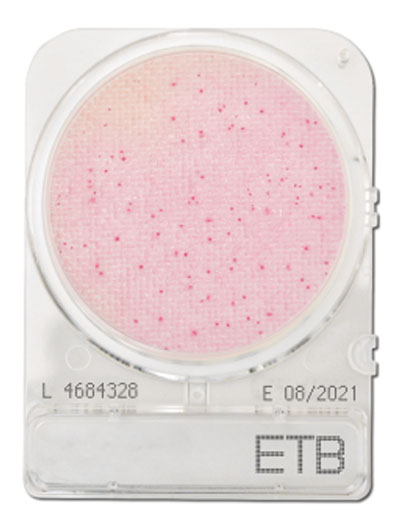Compact Dry ETB (Enterobacteriaceae)
Compact Dry ETB is a simplified medium to determine number of Enterobacteriacae by the combination of selective agents and pH indicator.
Approved
- AOAC Certificate Number: 012001
- MicroVal Certificate of Compliance Number: 2008LR02 (MV0806-002LR)
- NordVal International Certificate Number: 034
Characteristics
-
Colonies grown on ETB plate are distinguished by red/purple color for Enterobacteriaceae.
-
Medium contains selective agent and pH indicator, glucose for detecting Glucose fermenting bacteria.
Incubation
- AOAC International: 35±2℃ for 24±2 hours
- MicroVal: 37℃ for 24 hours, NordVal: 37±1℃ for 24±2 hours
Result Interpretation
- Count red/red-purple colonies for Enterobacteriacae
Procedures
























